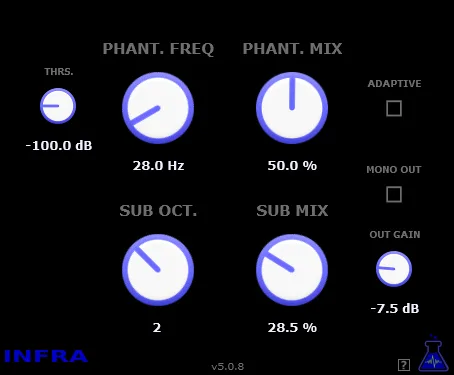In the world of sound effects, there are tools that can add unique movement and character to your tracks. One such tool is the phaser effect, which transforms static sound into dynamic, pulsating, or swirling textures. Today, we’ll take a look at an interesting development from Bitsonic – the Violent Phaser plugin.
What is a phaser and why is it “violent”?
A phaser is a modulation effect that creates a series of phase shifts (samples) in the frequency spectrum of a sound, and then mixes the processed signal with the original. The result is a characteristic “swirling” or “whooshing” sound, often associated with psychedelic music of the 60s and 70s, funk, or electronic genres. The effect is achieved by creating “notches” or “comb filters” that move through the spectrum, creating a sense of space and movement.
The name “Violent Phaser” from Bitsonic hints that this plugin goes beyond the usual, restrained phaser effects. One might expect that it is capable of creating more intense, deep, and perhaps even extreme variations of this classic effect. It likely has advanced control over resonance (feedback), which emphasizes the filter peaks, making the effect more pronounced, almost screaming.
Tempo sync – the key to rhythmic movement
One of the important features of the Violent Phaser is its ability to synchronize with the tempo of your project (DAW). This is extremely useful as it allows you to create modulation patterns that fit perfectly into the rhythmic structure of the composition. Instead of a free-flowing, asynchronous movement, you can make the phaser “breathe” or “pulse” exactly on the beat. This opens the door to creating interesting rhythmic textures on guitars, synthesizers, drum loops, and even vocals.
Possible applications of Violent Phaser:
- Adding movement and depth to guitar parts, from clean arpeggios to rich distortion riffs.
- Creating psychedelic or cosmic effects on synthesizer pads and leads.
- Enlivening static drum or percussion sounds, adding a rhythmic “wobble”.
- Experimenting with vocal processing to create unique, spatial effects.
- Expanding the palette of sounds in electronic music, ambient, funk, and rock.
Although a detailed list of parameters is not provided, based on the standard functionality of phasers and the name of the plugin, one can assume the presence of the following basic controls:
- Rate/Speed: Controls the speed of the filter movement. The ability to sync with the DAW tempo is key.
- Depth/Intensity: Determines how pronounced the effect will be, adjusting the width of the phase shift band.
- Feedback/Resonance: Amplifies certain frequencies, making the effect more intense, “metallic,” or “screaming.” This is likely the key parameter that justifies the name “Violent”.
- Mix: Allows you to mix the processed (Wet) signal with the original (Dry), controlling the overall presence of the effect.
- Stages (Number of steps): Determines the number of “notches” in the filter, affecting the density and nature of the movement. A larger number of stages usually gives a smoother and more complex movement.
The Violent Phaser plugin from Bitsonic, although presented as a simple synchronized phaser, promises more than just a basic effect. Its name hints at the potential to create powerful, rich, and even extreme modulation textures that can add a special “spice” to your arrangements. The ability to sync makes it a flexible tool for any genre where rhythmic movement is an important element. If you’re looking for a phaser that can be not only gentle, but also truly “violent,” the Violent Phaser from Bitsonic is worth your attention.



